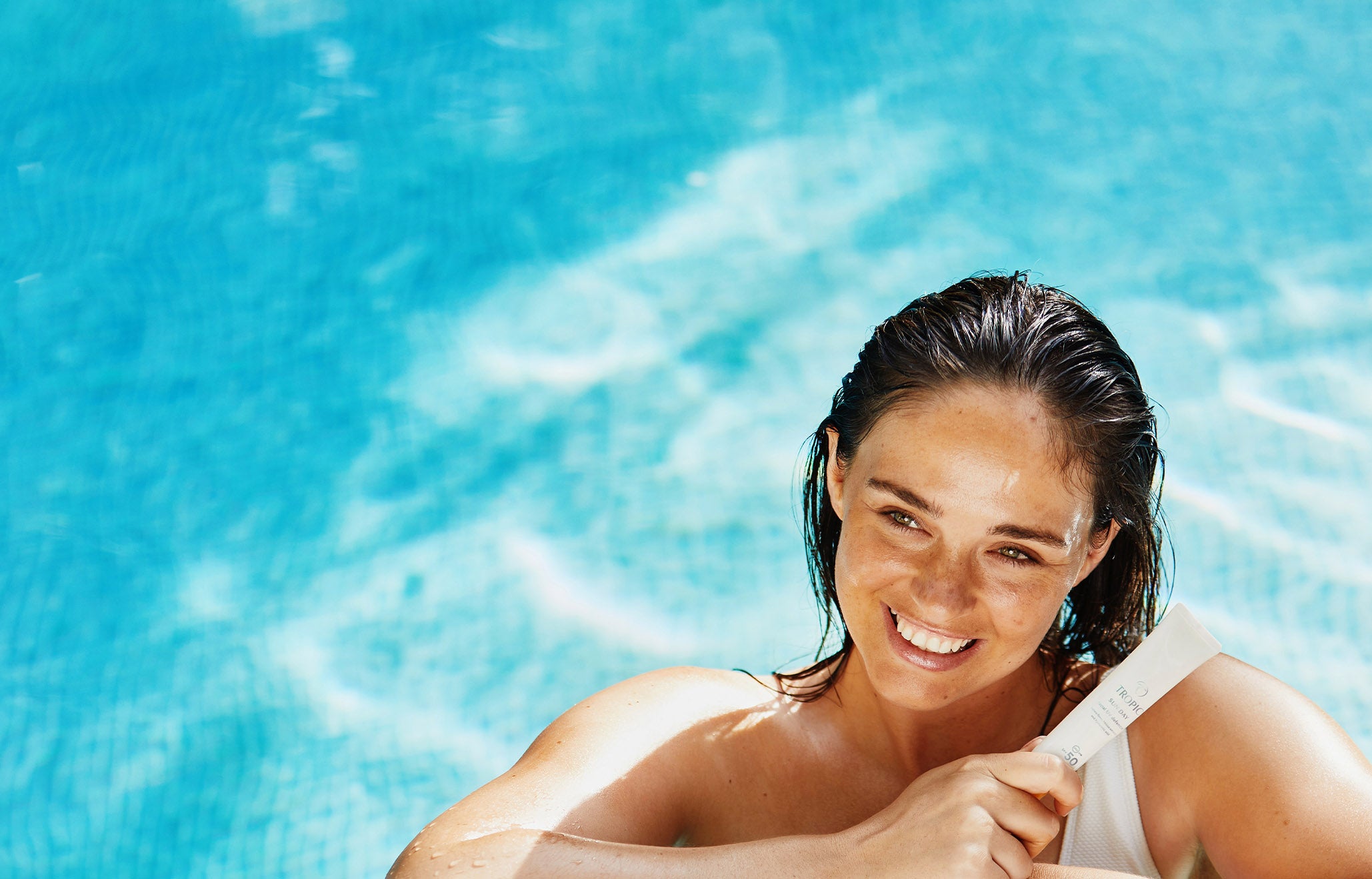
The most important step in your skincare regime, whatever the weather.
When the temperatures plummet and our thoughts inevitably turn from bikinis to bobble hats, there’s an element of summer that should be front and centre for every season – SPF. It’s often synonymous with long days at the beach or basking in the garden, but every dermatologist worth their salt will tell you that the trusty SPF isn’t a one-season product and should remain in your daily skincare regime long after the frost sets in.
Why should we be wearing SPF in winter when the sun is weaker and we’re inside more?
Sure, we’re not blessed with year-round balmy climes in the UK, but facialist and skin expert Renee Lapino is quick to stress that pollution and our infamous cloudy skies are just as harmful. “It’s a myth that the sun is always weaker in overcast weather,” she says. “Although it’s not as strong in winter, UV rays are still bouncing from the clouds and become magnified when the sun is behind grey skies. We also don’t have to be outside to feel the effects, as sun rays are intensified when they stream through our window panes.”
What are the skin health benefits of wearing SPF?
Saving ourselves from lobster territory at the height of summer aside, SPF can offer a lot more than sunburn protection all year round. “Most of us think of sun damage as dark freckles and sun spots, but it’s so much more than what we can see,” Renee explains. “The body creates those spots to protect the weak tissue the sun has already broken down. When we’re exposed to the sun, UV rays penetrate the dermis (the middle layer of the skin), causing an abnormal buildup of elastin, which breaks down collagen and leaves the skin wrinkled and sagging.”
Is SPF in our moisturiser or makeup enough?
From tinted moisturisers to foundations, you’ll be hard pressed to find a beauty product not offering some level of sun protection, but it may not be cutting it. “Most makeup products are only SPF10 or 15, which is nowhere near enough protection,” Renee explains. “I always recommend at least SPF20+ in a separate product for full, even coverage to protect the skin. We don’t put foundation on our eyebrows, eyelids and ears so makeup and moisturiser aren’t going to cover everything we need. Make sure you wait five minutes after applying SPF before putting on makeup to allow it to settle in.” So if your trusty foundation of choice has a slightly lower SPF, you don’t have to part with it, simply supplement it with a facial SPF before you apply.
Won’t putting makeup on top of SPF break me out?
Thick and sticky sun cream combined with foundation doesn’t make for a flawless complexion, but SPF offerings have come a long way from the white paste of our childhoods. “There are so many formulations now that don’t cause irritation or breakouts,” Renee tells us. “From powders and mineral creams to sprays and invisible lotions, SPF has adapted to hold more skincare qualities to make it more user-friendly. Brands have incorporated ingredients such as hyaluronic acid and skin-loving antioxidants for added benefits, so it sits flawlessly under makeup” just like Tropic’s lightweight Sun Day Facial UV Defence.
What else do we need to know?
While putting SPF on is vital, taking it off is just as important. “Sunscreen sits on the surface of the skin to protect it, but it can also trap a lot of dirt and grime. While we sleep our skin repairs itself, so we want it to be clean to allow oxygen to nourish it and encourage cell turnover, and cleansing properly is imperative to stop breakouts and congestion,” Renee warns.
Like all new habits, finding the right SPF for your daily routine is key for consistency. “If you like your morning routine as low maintenance as possible, opt for a tinted facial SPF that also provides light coverage. If you like wearing makeup, opt for a lightweight SPF with hydrating ingredients that you can seamlessly layer under a foundation” Renee suggests. “You can also consider using more than one formula for all day protection. For example, I have a cream for winter, a tinted SPF for summer and a stick for two hour top-ups year-round.”
Ultimately, SPF is a skincare staple, whether it’s for that brisk, face-reddening walk in the depths of winter or an amble along a hot beach. You might go on holidays, but you should never give your SPF any time off.






